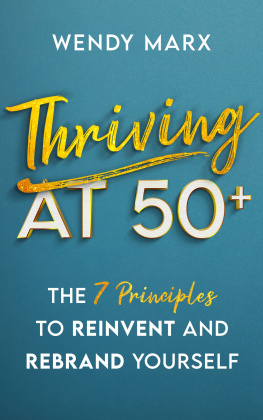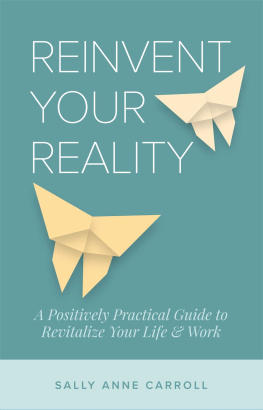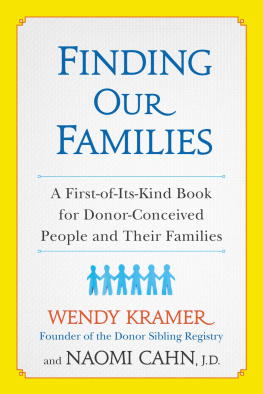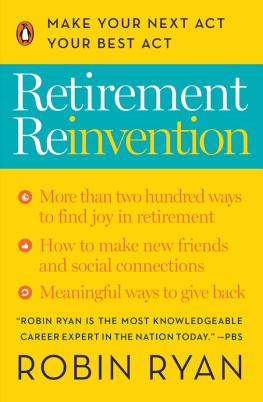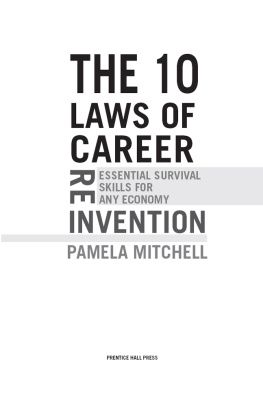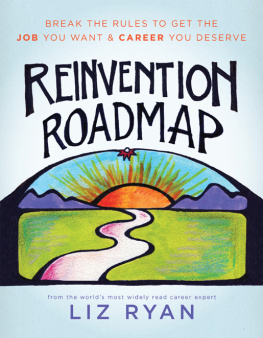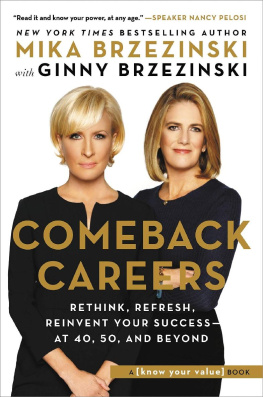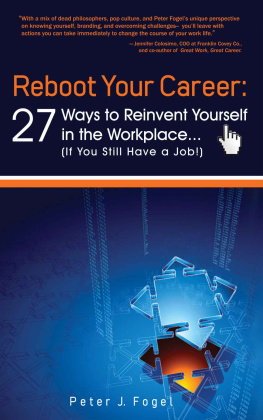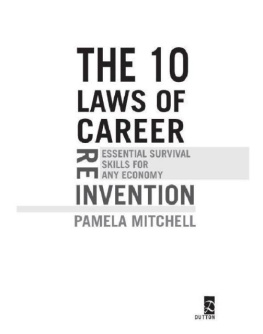Preface
Nicolas Babin thought his life was over at age forty-nine.
Walking home from work, the technology executive was hit by a speeding car. His right knee was busted, and he lost his sense of smell, taste, and hearing in his left ear. His spirit was crushed as he sank into despair.
I realized I was not the same man, Babin told me.
The former Nicolas Babin was robust and athletic. In his thirty-year career, he had achieved a number of firsts, including commercializing the worlds first GPS system and AI robot, both at Sony.
Babin thought about giving up. He didnt want to return to the hectic pace of his old job as director of digital transformation and business development at the global company Neopost. Considering he suffered from post-traumatic stress disorder after the accident, returning to his office, which was near the scene of the accident, would have been intolerable.
But when people began seeking his advice on technology problems, he had an aha moment. He realized the old Nicolas Babin still had value. Just as he did for Sony, he rebranded himself, this time as a digital transformation consultant.
Today, Babin Business Consulting is a thriving company with clients worldwide. Ironically, Babin is now happy the car accident disrupted his plans. It gave him the impetus to reinvent himself at a later stage in life.
Nicolas Babins story offers a happy ending to horrific circumstances. But is his story unique? Can ordinary people who have trod the same well-worn work path for years reinvent and rebrand themselves? Its easy to think that at a certain point in life, your career journey is set. You are who you are. How can you teach an old dog new tricks? Dont you have to pack up your career in at 50+ or at least slide downward to the finish line?
Negative Stereotypes
Negative perceptions of older workers abound. One persistent idea is that baby boomers are standing in the way of younger talent moving up in an organization. In Deloittes Global Human Capital Trends Report, 15 percent of respondents believed that older employees were an impediment to rising talent.
While its easy to believe that millennials are replacing boomers in the US workplace, statistics tell a different story. Recent research from the US Department of Labor shows that by 2024, one in four US workers will be fifty-five or older. To put this in context, in 1994, workers over fifty-five represented about one in ten workers.
As boomers hurdle through competing challenges of supporting families and saving enough for a longer lifespan, they cant afford to stop working. Only 24 percent of todays US workers age fifty-five and older have saved more than $250,000 (excluding homes and pensions), according to Deloitte.
With the surge of boomers working, I wanted to study how people like Nicolas Babin and those in other walks of life and careers were able to reinvent themselves around age fifty or older, a time when ageism rears its head. What I found has changed my own mindset about reinvention and rebranding. I learned that it isnt necessarily easy or fast. But its possible. And, done correctly, it can transform your life.
The Brand Called You
My interest in reinvention didnt begin with Babin. I first became excited by reinvention and personal branding in 1997 when I read an article by Tom Peters, famous for his book In Search of Excellence, called The Brand Called You. A manifesto for personal branding, Peters called for readers to brand themselves as a product, Brand You. The article had my name on it.
I had reinvented and rebranded myself multiple times. Peters made me realize that my career restlessness and swerves, while perhaps extreme, were examples of the power of reinvention and personal branding. I had successfully migrated from social work to journalism to marketing to PR, rebranding myself along the way. With this book, I am on my fifth reinvention as a coach for people over fifty seeking their next act.
A recruiter once shrugged me off as a career-changer. After that, I artfully cut some of my experience from my resum so I looked more straight-arrow. Today, I proudly own my history.
Beyond my own experience, I have spent some twenty-five years rebranding the clients of my B2B PR agency. As part of our public relations initiatives, we have helped rebrand and reposition our clients and their companies and developed their thought-leadership bona fides. As our virtually unknown clients would move from anonymity to industry icon, the strength of branding became evident.
Writing this book is part of my journey and process. As a baby boomer myself, I know that it gets tougher to reinvent yourself the older you are. You may not be as flexible or tech-savvy as your millennial cousins, but it is possible. And now I understand how.
The 50+ Paradox
People over fifty are in a unique position. On the one hand, they are armed with life experience and savvy; on the other hand, the typical workplace doesnt value that experience and knowledge. Often, older workers arent familiar with the current lingo and the latest technology gizmos; however, they have emotional intelligence and leadership skills in spades. Age discrimination is still rampant. Almost seventeen thousand age discrimination complaints were filed with The Equal Employment Opportunity Commission in 2018.
Despite the challenges, those most successful in reinventing and rebranding themselves have buffed up their strengths and shored up or compensated for any weaknesses. They have developed a process and strategy that underpins their efforts. This book will propose a framework you can use to thrive in your next actregardless of what it is.
The Seven Principles of reinvention and rebranding
Youll discover seven principles of reinvention and rebranding told through the stories of people over fifty from all backgrounds and professions. The principles presented sequentially will give you the tools to reinvent and rebrand yourself at your job, in a new business, or in a new career or lifestyle.
The principles are based on my interviews with people who have successfully reinvented themselves and those still struggling to do so. They also come from my own personal experience reinventing myself multiple times and my research into the psychology of reinvention and personal branding. They are not just theoretical but practical steps you can take now.

